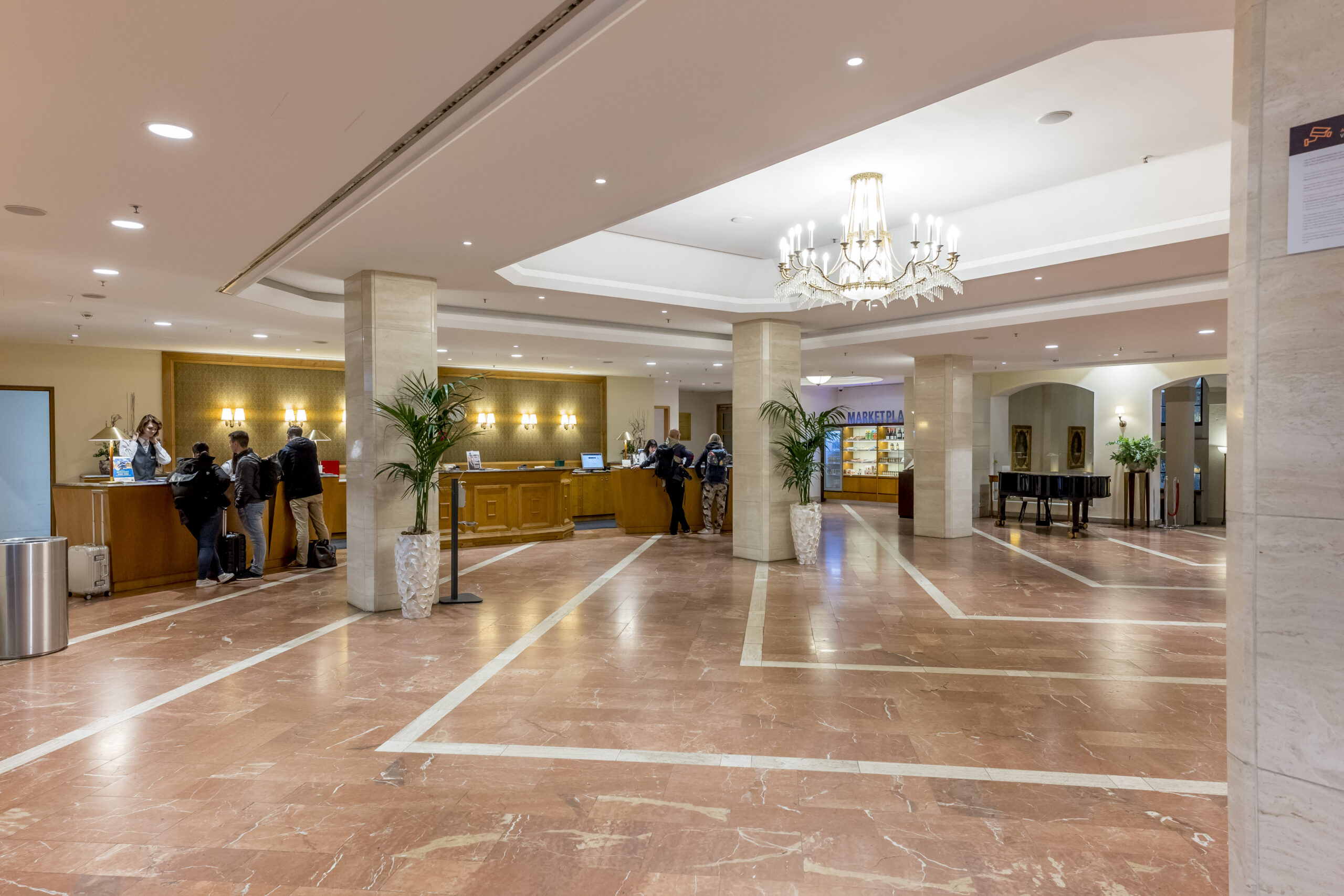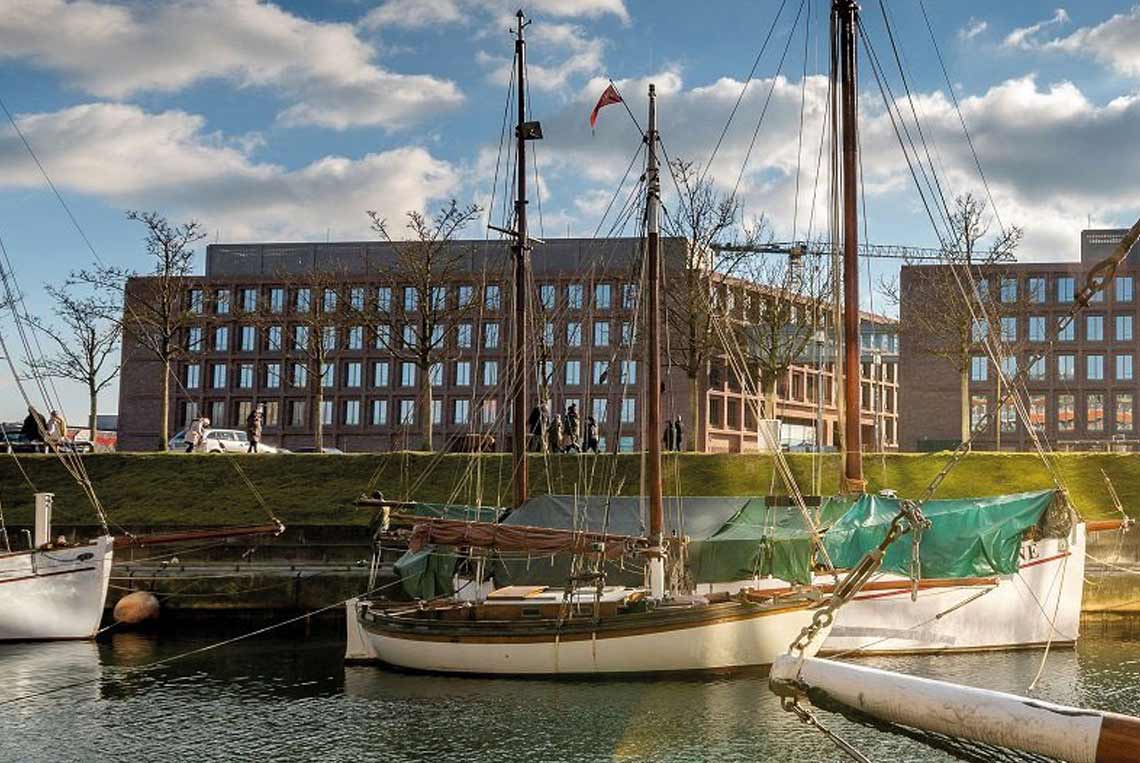Retrofit project with Exhibition and Convention Center in Shanghai
Issue 01-2021:
read all articles online
read as pdf
With many Chinese elements and a design concept of symmetry, the National Exhibition and Convention Center (NECC) is one of the landmark buildings in Shanghai. To meet the massive growth the building had to be modernized technology vice.
The existing exhibition halls had to be upgraded during ongoing exhibitions, which could not be temporarily cancelled for e.g. wiring. Therefore, wireless solutions have become the favored choice. Through the in-depth and detailed comparison of all kinds of wireless technologies, the energy harvesting wireless technology based on the EnOcean standard finally became the winner.
The project used a large number of wireless temperature, humidity and air quality sensors based on the EnOcean standard. They are working seamlessly with the existing building automation system via a BACnet gateway, integrating the field sensor parameters into the same control platform and they are greatly improving the comfort in the exhibition halls. At the same time, the solution lessened the costs during installation and will reduce the energy consumption of the entire system. This project provides a whole new idea for exhibition halls, stations, airports, and hotels that are not suitable for shutdown but need to be renovated.
Retrofit plan
As part of the project, the building control system has also been upgraded. According to the new requirements, the temperature and humidity data in the venue, as well as air quality data are collected and linked with the building control system to improve the comfort in the exhibition halls while achieving energy savings at the same time.
The project faced many challenges from the beginning. As mentioned above, exhibitions took place during the entire retrofit. Therefore, the on-site renovation had to take full advantage of the gap between the set-up and move-out period of two exhibitions. Secondly, simply installing the temperature, humidity and air quality sensors on the wall don’t fulfill the design requirements. The reason is, that most of the exhibitors and visitors’ activity areas are far away from the walls, so the booth area was the most in need of renovation. Thirdly, the work had to be in line with the budget.
After comprehensive analysis of the current situation, Interfuehler finally proposed a wireless and wired solution. In the area close to the wall, wired wall-mounted sensors can be used. Due to the use of multi-function sensors, the four-core shielded wire can be used as power and signal lines. The sensors are connected and then communicate with the central control unit. However, for a large number of booth areas, it is completely impossible to wire. Therefore, the self-powered wireless sensors based on EnOcean technology came into play.

On-site installation conditions
The NECC four-leaf clover hall is not shaped regularly, but has a slightly narrower structure in the middle and is continuously widening outwards. In order to ensure seamless coverage of the wireless signal, the “compass method” recommended by the EnOcean Alliance is used to determine the gateway location first. Generally, a radius of 15-20 meters is recommended for indoor coverage. Considering that the interior of the exhibition hall is relatively empty, most of the booth partitions are made of gypsum board or wood panels, so we chose a radius of 40-60 meters for coverage. Of course, during the implementation of the project, our engineers also reconfirmed on-site, making fine-tuning according to the actual signal reception or improve the signal reception quality by adding repeaters.
Additionally, we had to take into account that during the actual exhibition, the booth style, material, size, structure, etc. of each exhibitors are different. In order to ensure wireless signal coverage, the gateway is equipped with a 20-meter dedicated antenna extension cable and the installation height over four meters. This effectively reduces the barrier and attenuation of wireless signals from the booth.
Future-oriented solution
There is an increasing demand for renovation of existing buildings in China with the goal to reduce energy consumption and increase the comfort in the building but within limited retrofitting costs. The wireless and wired solution proposed by Interfuehler not only makes full use of the battery-free and wireless flexibility of the EnOcean sensors, but also reduces man-hours, materials and costs.
Compared to other wireless technologies currently on the market, EnOcean has the characteristics of high anti-interference, suitable indoor transmission distance, ultra-low-power consumption and operates self-powered. The high interoperability due the open standard also makes it easy to integrate into other building systems such as Modbus, BACnet, LON or KNX.
New articles in Smart Building
Top articles





